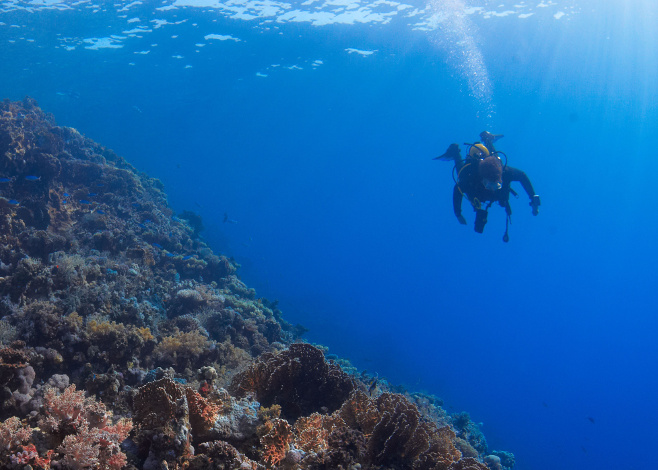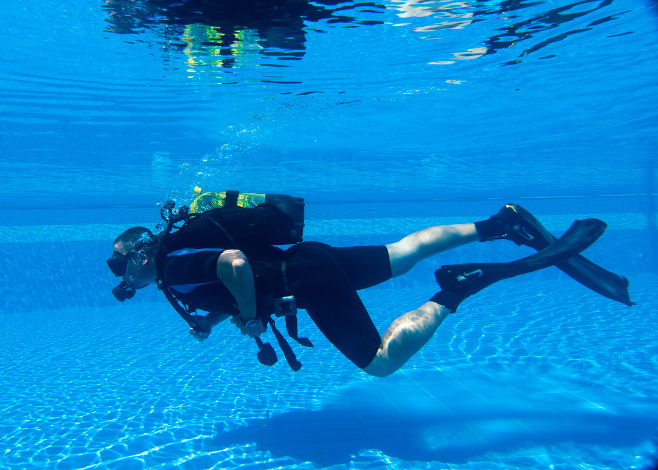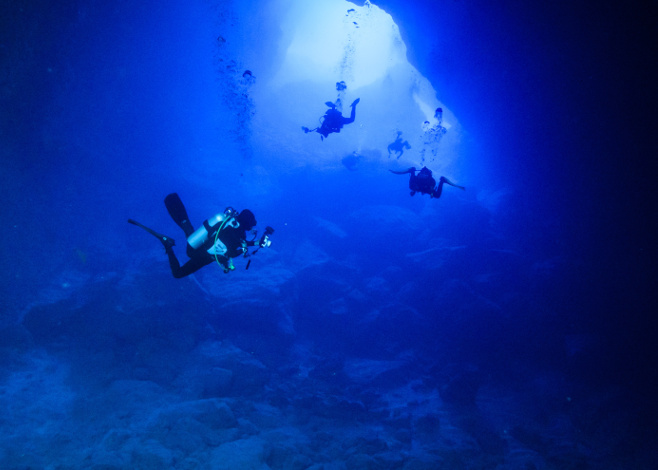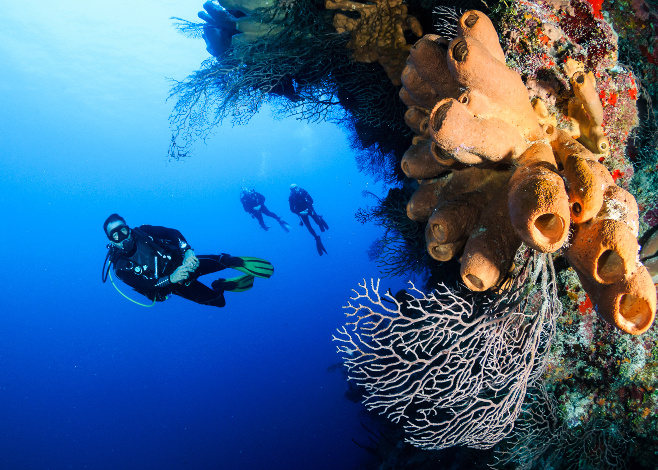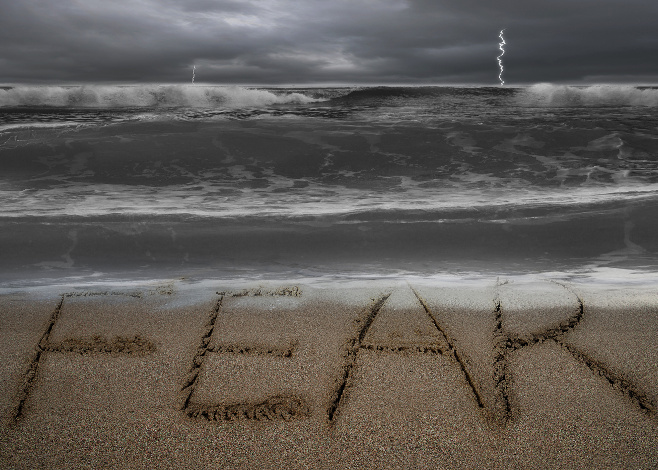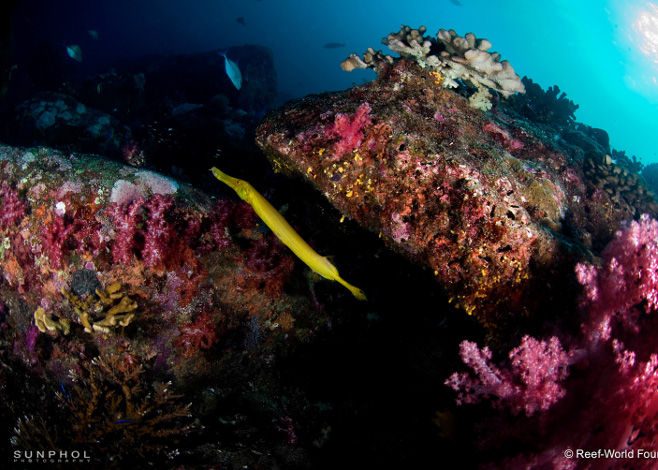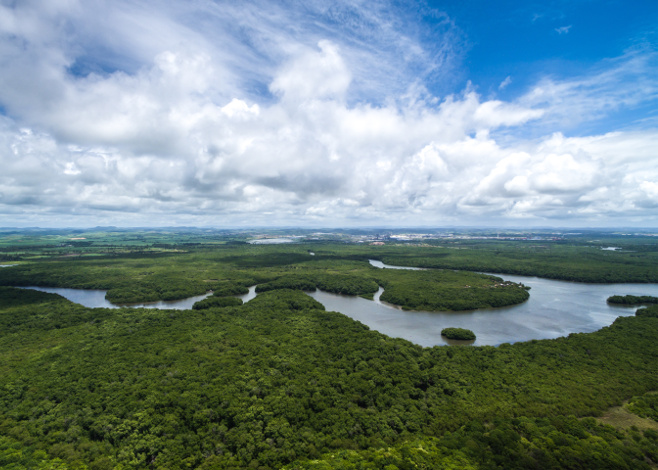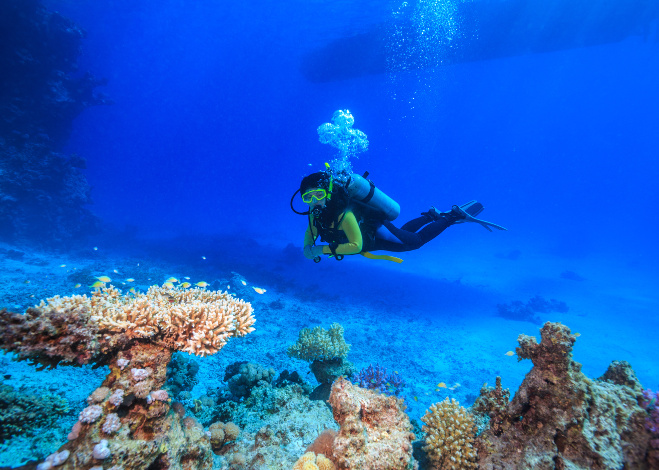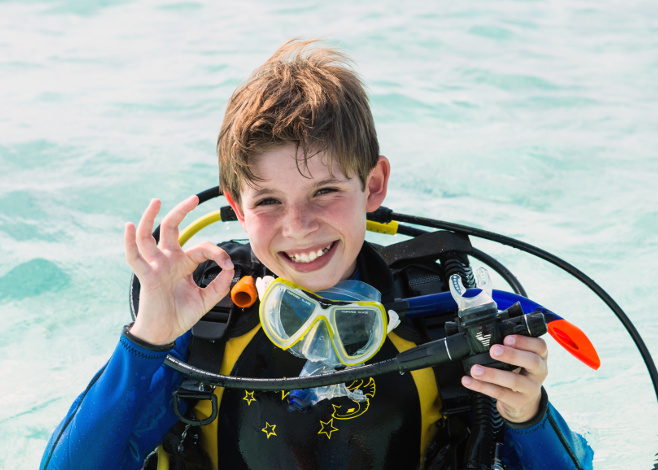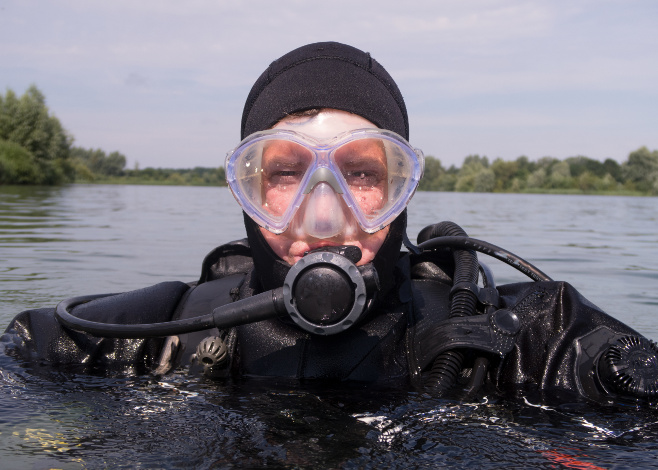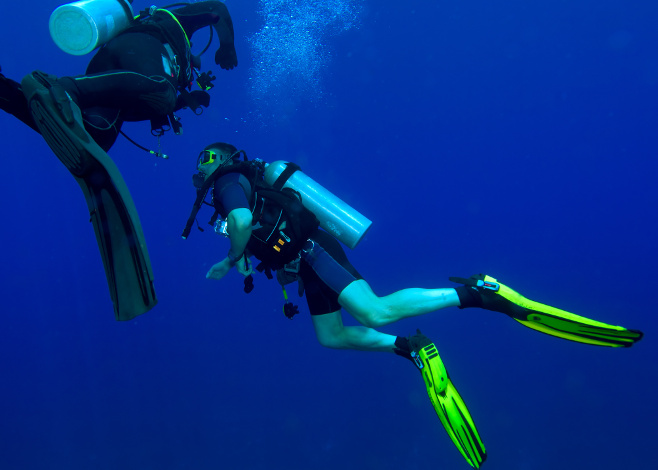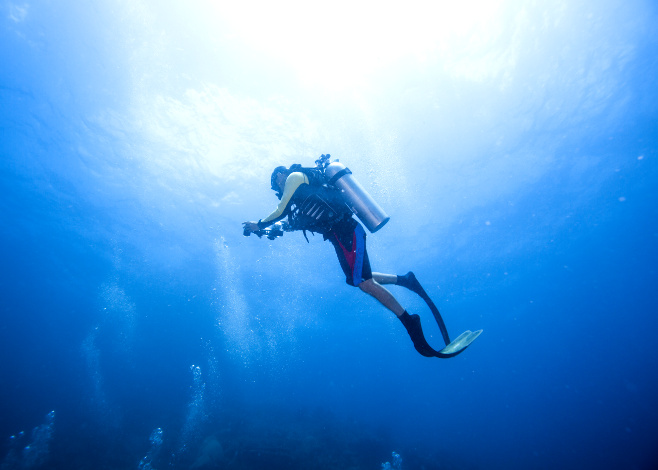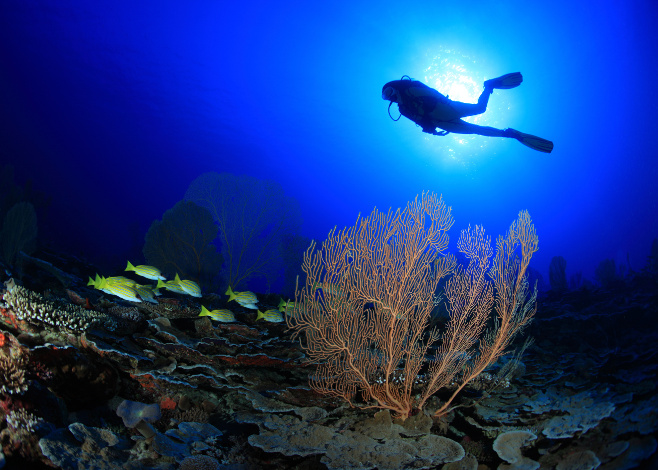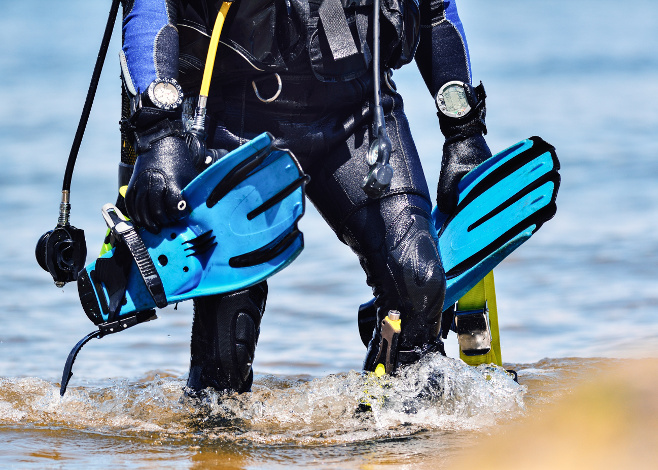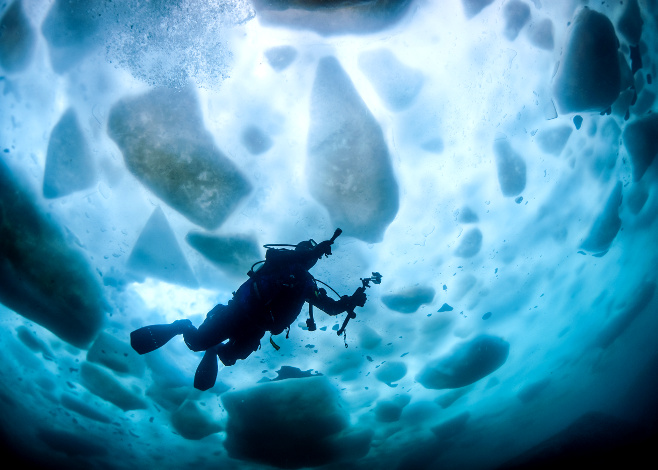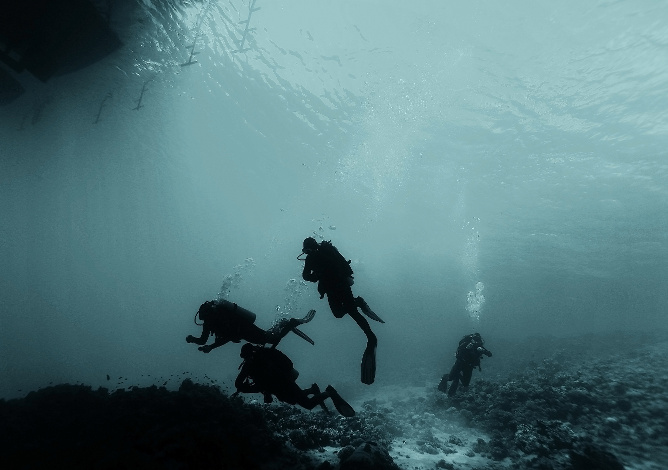Although kids can begin diving as young as age 10, that doesn’t mean they’re ready for underwater photography. Consider a number of factors before putting a camera in your child’s hands.
In the Water
Most divers know about the dangers of getting caught in a downcurrent, but what if you’re caught in an upcurrent? Here’s what to do.
Mastering neutral buoyancy is important in itself. Take it to the next level by performing (or teaching) other dive skills while neutrally buoyant as well.
Getting caught in a downcurrent is unnerving for even the most seasoned diver. Here’s what to do (and what not to do) if you’re caught in a downcurrent.
Although it’s as fundamental as good buoyancy, diving awareness is rarely taught. Here’s what you need to know to keep track of yourself underwater.
We’ve all heard people say they’re too afraid to try diving for a variety of reasons — claustrophobia, sharks, drowning — and maybe we felt that way too before we fell in love with the sport. Here’s how to address and overcome those fears.
How do you become your dive guide’s best buddy? Here’s what five Green Fins dive guides from the Philippines have to say.
With the Rio Olympics just behind us, we’re taking a look at some of the most spectacular underwater wildlife of the Brazilian Amazon.
Some divers seem never to run low on air, while others struggle to stay down for 30 minutes. In this four-part series we’ll address how to fix poor air consumption.
A child who’s a confident scuba diver can carry that self-assurance into several other aspects of his or her life including school, social interactions or other sports.
Although it’s often the first piece of gear to come off at the end of the dive, here’s a case for keeping your mask on.
Some divers seem never to run low on air, while others struggle to stay down for 30 minutes. In this four-part series we’ll address how to fix poor air consumption.
Some divers seem never to run low on air, while others struggle to stay down for 30 minutes. In this four-part series we’ll address how to fix poor air consumption.
Buoyancy control is one of the most important skills to master when it comes to diving, and practicing your hover in the pool is one of the best ways to dial it in.
With so many styles on the market, choosing a pair of fins can seem a daunting task. How do you know which fins are right for you?
For tropical divers, the thought of diving in 50 F (10 C) waters may not be very appealing. But with much to see in colder seas, it may be time to try it out.
Parents of diving children will likely approach dives very differently when their buddy is their child versus anyone else. What’s the best way to be a good dive buddy while also giving your kids the room they need to build their dive skills?
When it comes to safety, starting your dive properly sets the tone for the entire experience.



